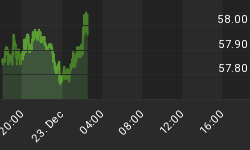Below is an extract from a commentary originally posted at www.speculative-investor.com on 10th January 2007.
The combination of massive inflation and factors that help suppress some of the 'bad' effects of inflation* has allowed imbalances to become much greater than would otherwise have been possible. It has also created the illusion that the rules of the game have changed.
The analysis done by research firm GaveKal provides us with a good example of an illusion created by rampant inflation. Over the past two years the GaveKal team has published a book ("Our Brave New World") and many articles in which the argument has been made that it is different this time; and that one of the main reasons it is different is due to a larger percentage of the US economy becoming "knowledge-based". In particular, a bullish structural change often cited by GaveKal is the rise to prominence of "platform companies": companies such as Dell Computer that outsource the low-margin capital-intensive parts of the business -- manufacturing, for instance -- to countries where labour costs are extremely low, and keep the high-value-added/high-margin parts of the business such as marketing and R&D.
According to GaveKal, the long-term shift from a manufacturing-based economy to a "knowledge-based" economy is largely responsible for US corporate profits becoming abnormally high as a percentage of GDP and is why we shouldn't expect the after-tax cash flow generated by corporate America, as a percentage of GDP, to revert to its long-term mean. Dr John Hussman exposes some of the flaws in the GaveKal argument in his commentary at http://www.hussmanfunds.com/wmc/wmc061226.htm, but we think there's a bigger issue not covered in Hussman's rebuttal.
The bigger issue is that GaveKal et al make the mistake of treating money as if it were neutral and attempting to explain economic/financial trends by looking only at business developments. The thing is, what central banks and governments have done and continue to do to their currencies is at the core of today's major trends and deviations from long-term averages.
As a result of what continues to transpire on the monetary front it is often only possible to see what's REALLY happening via ratio charts that remove from the picture the general rise in nominal prices caused by currency depreciation. For example, the good nominal performance of the US stock market over recent years in the face of much higher-than-average valuation levels would seem to support GaveKal's theories, but the first of the following charts clearly shows that the stock market of the "knowledge-based" US economy is in a secular BEAR market relative to the stock market of the resource-based Canadian economy. Furthermore, as evidenced by the second of the following charts the Canadian stock market is, itself, immersed in a secular bear market in hard money (gold) terms.


The bottom line is that when we take a long-term view of relative price performance we can see the footprints of an inflation problem exactly where we should be seeing them. The rules of the game haven't changed; all that's changed is the money in which prices are denominated. Specifically, money has been losing value at an accelerated pace and it's been doing so in a deceptive way.
*Over the past 10 years a number of factors have come together to make it possible for central banks to promote more growth in the total supply of money and credit with less adverse effects than ever before, by far the most important factor being the large out-flow of dollars on the US current account and the re-cycling of these dollars into the bond market. Currently, dollars flow out of the US at the rate of around $700B/year in exchange for low-cost goods, thus helping to keep downward pressure on the prices of those things included in the US CPI calculation. A large chunk of this dollar out-flow is then absorbed by price-insensitive buyers -- central banks that are driven by concerns other than obtaining a good real return on investment -- and sent back to the US in exchange for debt securities, thus helping to keep downward pressure on interest rates.
















